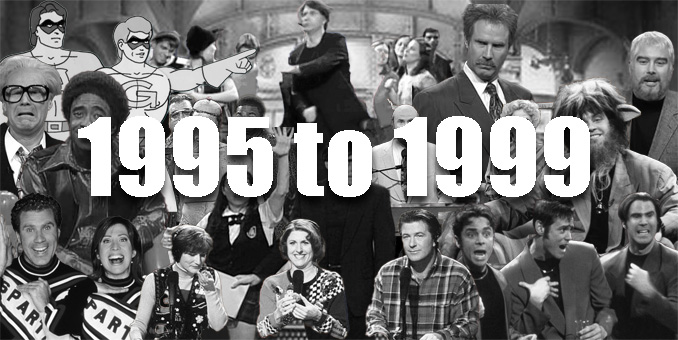
In honor of Saturday Night Live‘s 50th Anniversary, we will be going through its rich and varied history and breaking down its legendary run into easy to digest eras. Some eras might last for years, others only one season. But each era is one that either marked a change in the show, were driven by a remarkable personality of a star, or marked a special part of the history of the program. Today, we find a revamped show, fresh from almost being cancelled, with its eyes towards the big screen.
In the early, formative days of Saturday Night Live, the idea that characters would return was entirely foreign concept. Legend has it, that the idea didn’t even occur to Lorne Michaels until the tenth episode when Buck Henry asked him if John Belushi’s Samurai character would be returning, Michaels thought that was a good idea. The rest is history.
Recurring characters soon became the most recognizable feature of the show. It became a way for SNL to give the audience what they want but also a way for the performers to get guaranteed airtime. If you create a character that the audience loves, that makes the struggle to get on the air that much easier.
Some returning characters resonate with audiences more than others, some catch with fans so much that you can feature them every show and they never get tired of them. Others can try and try in sketch after death only to die a long, painful death. Some actors are able to create numerous memorable characters, others are unable to create even one.
During this era, the show’s recurring characters helped raise the show from near cancellation to an era of stability. It also marked a short period of time when the show tried to turn its recurring characters into hits at the box office, only to flame out disastrously.
When we last left this feature, bad reviews and lower than normal ratings had Saturday Night Live on the brink of cancellation. Michaels was forced to make grand, sweeping changes to the show to keep it on the air. Gone were most of the cast, including recently crowned box-office champions Chris Farley and Adam Sandler. Only Norm Macdonald, Mark McKinney, Tim Meadows, Molly Shannon, and David Spade from the 1994-1995 cast were spared from the carnage, and Spade only came back in a limited basis.
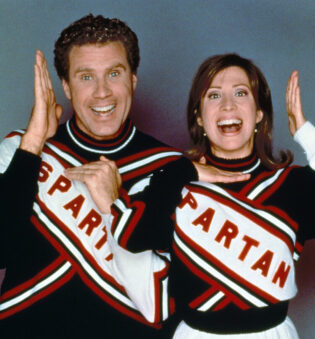
For replacements, Michaels looked mostly to the world of improv sketch comedy. From Los Angeles’ Groundlings troupe, he hired Will Ferrell, Cheri Oteri and Chris Kattan, and from Second City he hired Nancy Walls and David Koechner. He also brought stand-up comedians Jim Brewer, Darrell Hammond and Colin Quinn.
The new cast brought the show out of its cancellation peril by going heavy into its recurring characters. The first year alone gave us The Cheerleaders. The Roxbury Guys. Mary Catherine Gallagher, Lenny the Lion, Goat Boy and The Joe Pesci show. By the time the era was over, we would be introduced to Mr. Peepers, Harry Caray, The Culps, The Delicious Dish, Celebrity Jeopardy!, Janet Reno’s Dance Party, Goth Talk, Leon Phelps, The Ladies Man, Mango, The Céline Dion Show, Brian Fellow’s Safari Planet and many more. Whew!
The sheer amount of popular recurring characters gave the show abundant reasons for viewers to come back. It also gave Michaels fodder for his concurrent project: trying to build film franchises out of popular sketches.
Michaels was trying to capture that made the original 1992 Wayne’s World a smash success. That film made $183.1 million against a $20 million budget, so Hollywood thought they could mine similar gold from other sketches from the show.
All involved should have known better. 1993’s Wayne’s World 2 barely made twice its budget back, a disappointment in comparison to the profit the original made. The same year’s Coneheads was a flop, making $21.3 against a $30 million budget. But looks like a blockbuster success compared to the grosses of It’s Pat, which was one of the biggest flops of all time. It had a paltry $8 million budget, but that doesn’t mean much. It only made $60,822 in its one week of release in three cities.
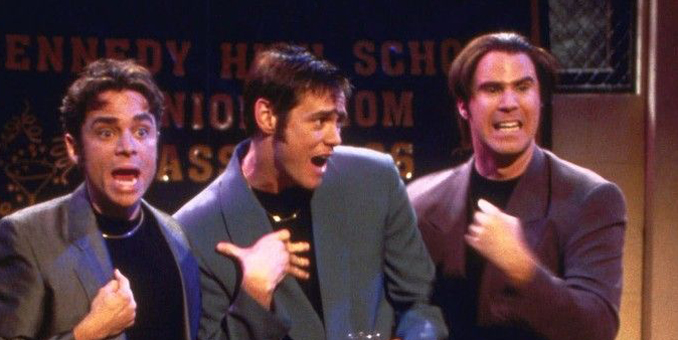
Despite all of this, more SNL sketch adaptations hit the theaters, four during this era of SNL, two adapting sketches that were still on the show–A Night at the Roxbury and Superstar. The total turns to five if you count The Ladies Man, which came out in 2000 but was surely being planned during this era.
These films ranged from mildly disappointing at the box office (Superstar, which made $30.6 million against a $14 million budget, and A Night at the Roxbury, which earned $30.3 million against a $17 million budget) to the completely awful (Stuart Saves His Family, a $12 million film that only made $$912,082 in theaters). As for reviews, none of the five films scored over 46% fresh at Rotten Tomatoes, and the one that scored that 46% was the ill-advised sequel, Blues Brothers 2000.
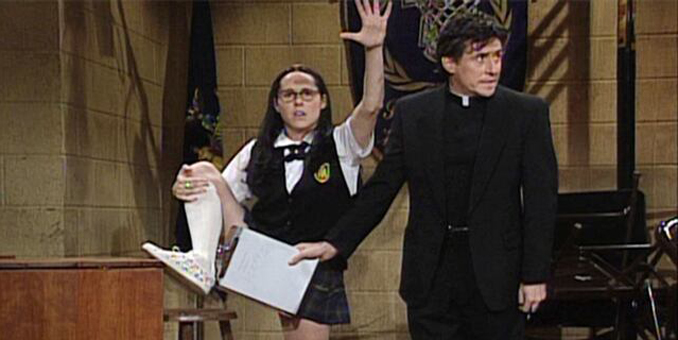 What Michaels failed to realize was that his sketches might have been enough save his series, they weren’t enough to support a full-length film. Well, that is unless you were willing to take the time and the talent to expand the world of the sketch’s characters. That’s what made the Wayne’s World films the best of the bunch. They built a world around the characters, not trying to fit the characters awkwardly into an poorly developed world. Needless to say, it would be a decade before another SNL sketch made it to the silver screen.
What Michaels failed to realize was that his sketches might have been enough save his series, they weren’t enough to support a full-length film. Well, that is unless you were willing to take the time and the talent to expand the world of the sketch’s characters. That’s what made the Wayne’s World films the best of the bunch. They built a world around the characters, not trying to fit the characters awkwardly into an poorly developed world. Needless to say, it would be a decade before another SNL sketch made it to the silver screen.
I’d be remiss if I didn’t mention the biggest controversy that came from this: The Norm McDonald fiasco. Norm McDonald lasted until 1998 before he was fired for doing the unthinkable. No, not dropping the F-bomb (although he did do that) but for making fun the friend of an NBC executive.
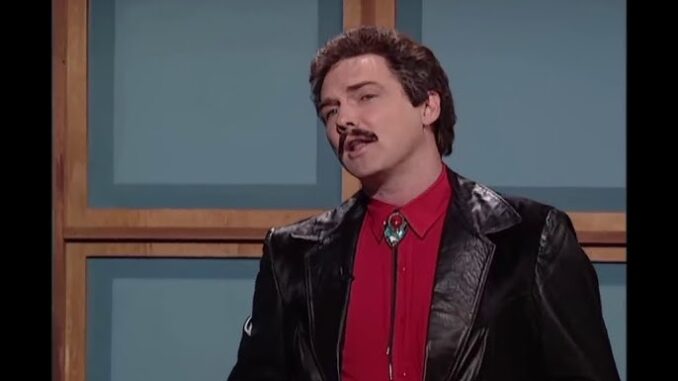
Well, it was a little more complex than that. The executive was Don Ohlmeyer. His friend was O.J. Simpson. And Norm was making the jokes about Simpson’s trial for double murder during his role as Weekend Update anchor.
It wasn’t fair to Norm. The O.J. Trial was the news event of the century. It was such a part of the national consciousness that Norm couldn’t avoid cover it. And if he took it easy on O.J., and O.J. in no way deserved the handled with kid gloves, then Norm would have come off as a phony. So, he stood to his guns and was fired because Ohlmeyer had crappy taste in friends.
Next time out, we’ll cover the ladies of SNL, going from “Chevy’s Girls” to head writer of the series.




